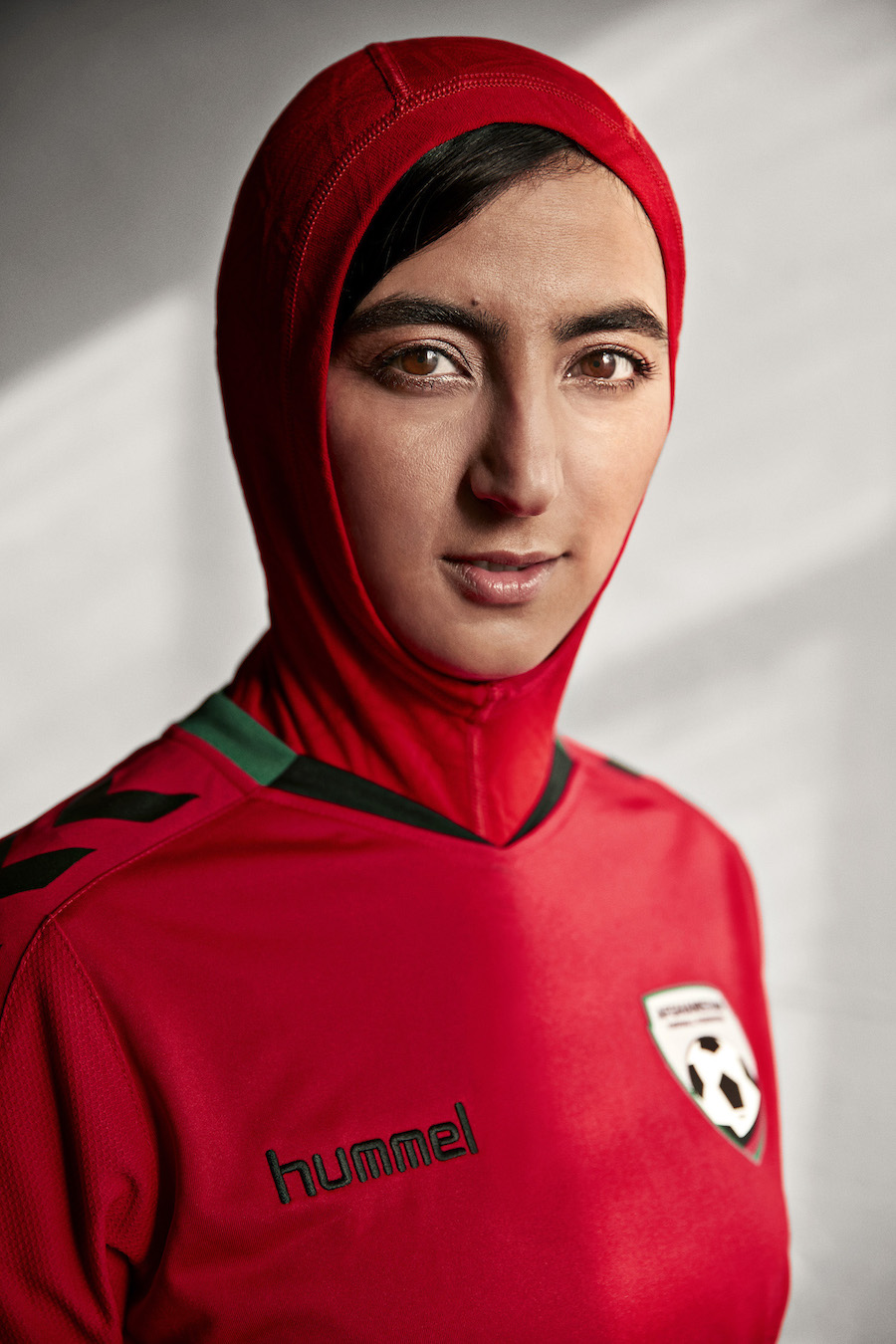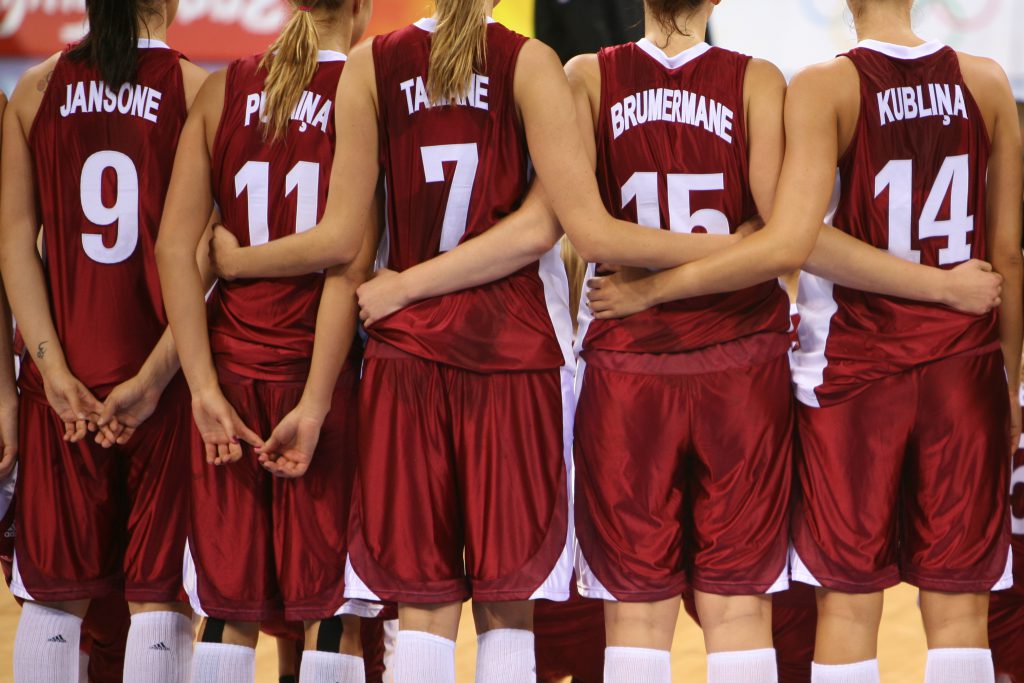Writer Anne Miltenburg examines the controversial and ever-changing world of women’s sportswear in a two-part essay. Here, we resume her discussion of the lack of proper professional gear for women. Check out part 1 here.
Why don’t female soccer players amp up the sex appeal to increase enthusiasm for women’s sports? “If sports was only about long legs, then women’s beach volleyball would be the biggest sport in the world,” remarks Shammy Jacob, former Director of Sustainable Ventures at Nike. “Of course performance should come first. Only then is it about looking great as an athlete. But looking great does not equal looking sexy.” To prove her point, Jacob offers an historic example. In the 1990s, Nike had been working with the American women’s national soccer team to design their outfits for the upcoming world championships. One of the things the women asked for was a better bra, one designed for sports. “To all of our amazement, Brandi Chastain scores the winning goal of the tournament, and celebrates by sliding onto her knees and taking her shirt off, revealing her sports bra.” The moment was captured in a photo that made the cover of Sports Illustrated and became a landmark image in the history of women’s sports. Jacob rejects the idea that the image was iconic because it was revealing. “What the shot showed was an athlete at the top of her game. To have everyone see a woman so fit, so strong, so victorious, and to receive so much attention, that made a world of difference for women’s sports at that time. Nike focused on performance but made sure the styling was also relevant and tasteful.”
Of course performance should come first. Only then is it about looking great as an athlete.
Despite the fact that more women are playing and watching sports, and that general viewership for women’s sports is increasing, women’s sports uniforms in most parts of the world remain stuck in a vicious circle. Without evidence of demand, sports brands won’t invest in creating professional gear for women. Without high-quality gear, fewer women play and fewer still play at their best, making games less exciting for spectators and less interesting for sponsors and sports brands, closing the circle of low demand.
One brand that is looking to break the circle is Liona, a new sports brand from the Netherlands, founded by former professional soccer player Leonne Stentler. Seeing that no brand was taking up the challenge of providing high-quality gear for women, Stentler decided to jump into the gaping hole in the market. Launched in 2015, Liona is already supplying professional league teams across the country with uniforms. Growing up as a child playing and during her entire professional career, Stentler took the absence of women’s kit as a given. “There is no women’s clothing available all the way to the top of the league. It is a huge investment for brands to produce a “second line” for women . . . . It is a men’s game; we are not a priority.”
The better the professional gear, the better the player. The better the player, the bigger the audience. With bigger audiences comes more sponsorship, allowing more women to have a career in sports.
Together with a fashion designer, Stentler started to redesign women’s uniforms. Most innovations came naturally to Stentler, who had seen firsthand what was needed. “All girls wear tights underneath their shorts for when they make slides. So our Liona shorts have built-in tights. Their waistbands are wider for more comfort. Shirts are longer than those for men and wider at the hips.” The response to Liona has been overwhelmingly positive. Luckily, it is not just praise that is rolling in, but orders as well. Liona has just supplied FC Twente with its women’s team uniform and the team is raving. “This is what is needed in the long run to create more confidence, to attract sponsors, and to lift the sport to a higher level,” says Stentler.
Stentler is not alone in seeing massive opportunities for women’s sports uniforms. With the availability of great sports gear, the vicious circle female athletes have found themselves in can become an upward spiral: the better the professional gear, the better the player. The better the player, the bigger the audience. With bigger audiences comes more sponsorship, allowing more women to have a career in sports.
Princess Reema Bint Bandar Al Saud, Vice President of Women’s Affairs at the General Sports Authority, Saudi Arabia, is one of the players looking forward to joining Stentler’s cause while focusing on the needs of Muslim women. “The market is not just girls in the Middle East. There is a pan-Islamic diaspora. Imagine a young girl in Birmingham who wants to compete. Why would you exclude her from the game?” Anne Skovrider of Hummel agrees. At the end of the day, access to the sport is what it should be all about: “Let these girls go out, play, get fit, learn teamwork, get confidence, feel good about themselves. That is what we want to support.” ♦
Return to the first installment of “Kit That Fits.”
Photo credit: Khalida Popal, former captain of the Afghan national women’s soccer team. Courtesy of Hummel.












